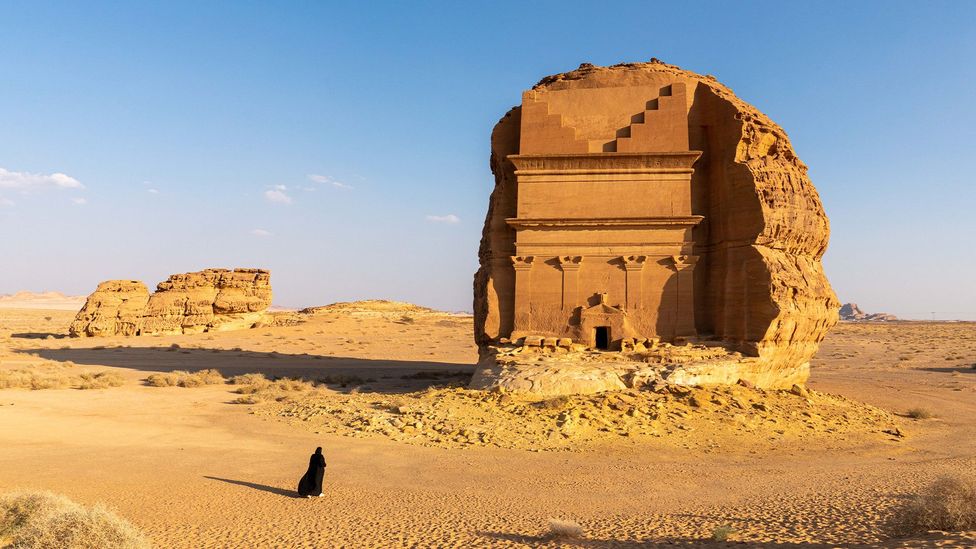As a photographer, I've always been drawn to the unique way that light in the desert stretches, bounces off the sand and rock and illuminates the plains. There is a stillness in these landscapes that I've come to crave, but I'm also fascinated by the relationships people build with deserts. In the Middle East, humans have found ways to survive and even thrive in these harsh environments for millennia, and perhaps nowhere is this ingenuity more evident than in one of the Arabian Peninsula's most significant cultural cradles: AlUla (sometimes written "al-Ula").
Set in the AlUla Valley amid the soaring sandstone and granite mountains of north-western Saudi Arabia's Hijaz region, this ancient desert oasis has supported human life for the past 200,000 years. The area's fertile soil and access to water amid the arid, mountainous desert helped multiple civilisations blossom. The Dadan and Lihyan kingdoms that flourished here between 800 and 100 BCE were followed by Hegra, an important city in the Nabataean civilisation whose capital, Petra, was located farther north, in modern-day Jordan.
Yet, it wasn't until 2019 when Saudi Arabia began issuing tourist visas for non-religious travel that foreign visitors were able to witness this long closed-off and unexplored valley. Today, echoes of AlUla's long and mysterious past are everywhere, and as archaeologists slowly begin to uncover the many burial mounds, tombs and rock inscriptions scattered throughout AlUla's numerous sites, this ancient oasis is finally starting to reveal its secrets.
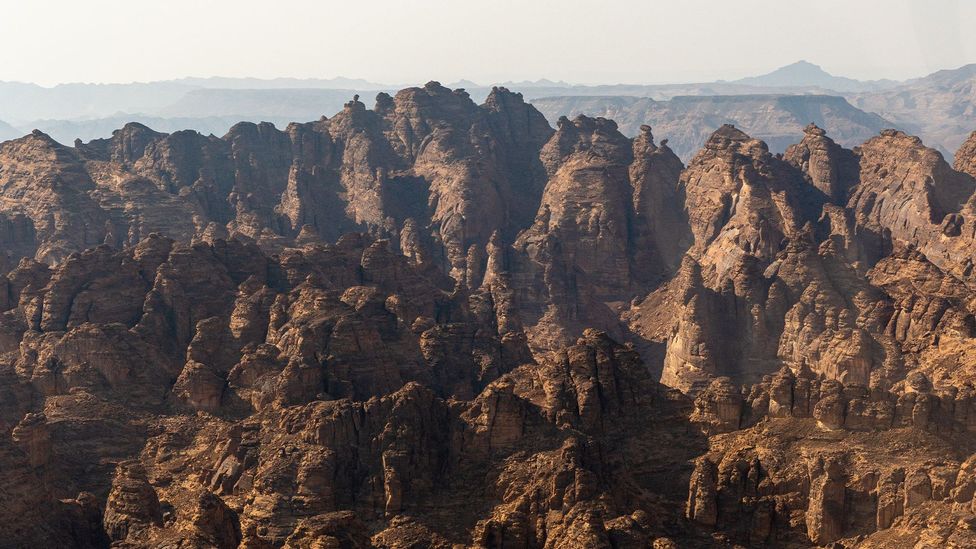
(Credit: Yulia Denisyuk)
Rock-carved kingdoms and ancient messages
A stone-built city prospered in the AlUla Valley as early as 800 BCE. Dadan, the capital of the eponymous Dadan and later Lihyanite kingdoms, quickly became popular as a major trading hub for frankincense en route to Egypt, Mesopotamia and the Mediterranean.
The Dadanites developed their own script, and today these inscriptions – some of which are more than 2,500 years old – are preserved remarkably well at the nearby site of Jabal Ikmah, which is often called "AlUla's open-air library". These etched messages range from simple graffiti to elaborate records documenting offerings to the gods.
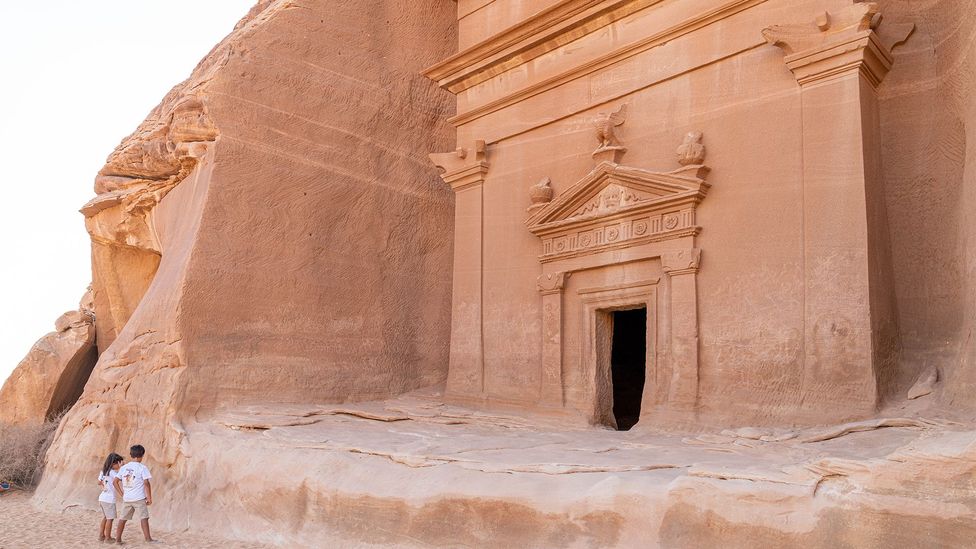
(Credit: Yulia Denisyuk)
The long-lost Nabataeans
By the 1st Century BCE, the Nabataean civilisation from the southern Levant (modern-day Jordan) had expanded into north-west Arabia. While Petra remained the kingdom's capital city, the Nabataeans' most important city to the south was Hegra – Saudi Arabia's first Unesco World Heritage Site.
For some 200 years, skilled masons worked inside Hegra's necropolis on majestic monuments like Qasr al-Farid, an unfinished, yet beautifully preserved tomb which, according to inscriptions, likely belonged to a prominent member of Nabataean. Hegra's sprawling 1.6-hectare archaeological complex contains 111 tombs that travellers to AlUla can visit today.
One of Hegra's largest tomb clusters, Jabal Al-Banat (pictured), contains 29 tombs commissioned by or dedicated to women. It was another outcrop like this, called Jabal Ahmar, where the tomb of Hinat was found. Hinat, a local woman, was wealthy enough to have a tomb made for her and her 80 descendants. Alongside human remains, textile and leather were excavated, giving archaeologists a better glimpse into Nabataean life. In 2023, a team of scientists wrapped up a months-long project of reconstructing Hinat's face which now greets visitors at Hegra Visitor Center.
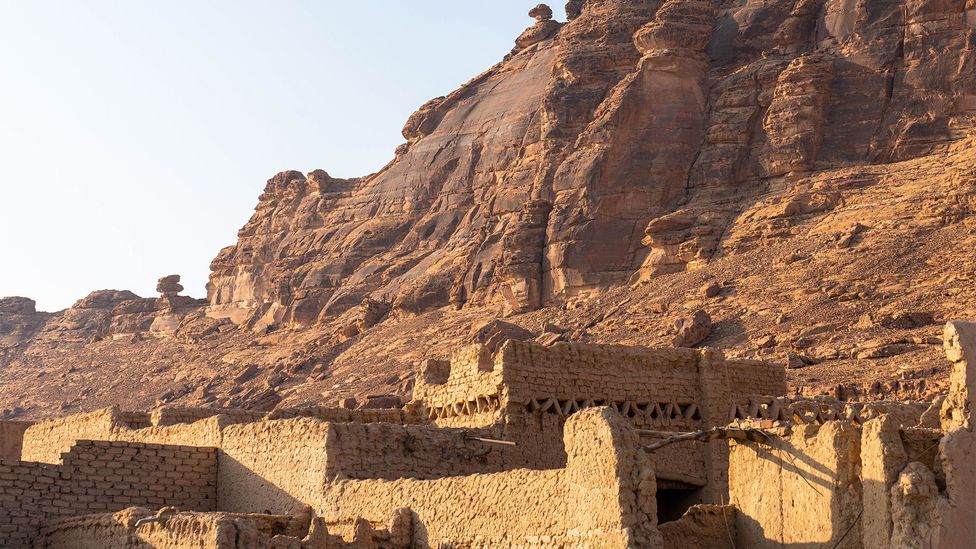
(Credit: Yulia Denisyuk)
Old Town
In the centuries after the Nabataeans vanished, the valley became home to a number of villages, but it wasn't until Islam arrived in the 7th Century CE that the oasis once again became an important stopover – this time for worshippers on the pilgrimage route to the Islamic Holy City of Makkah. Settlements here soon started thriving anew – the most famous of which is Ad-Deerah, known as "AlUla Old Town", which was built around the 10th Century using some of the same stones the Dadanites and Lihyanites used a millennium earlier.
Filled with tightly packed mudbrick houses, shops, mosques, squares and a defensive fort, the town was continuously inhabited for more than 800 years until the 1980s, when the government relocated residents to the nearby modern town of AlUla in order to preserve the original settlement as an open-air museum. Today, the Old Town is a maze of abandoned homes, ceramics and embroidery workshops, and shops where travellers can buy artisan wares and dates from AlUla's surrounding groves.
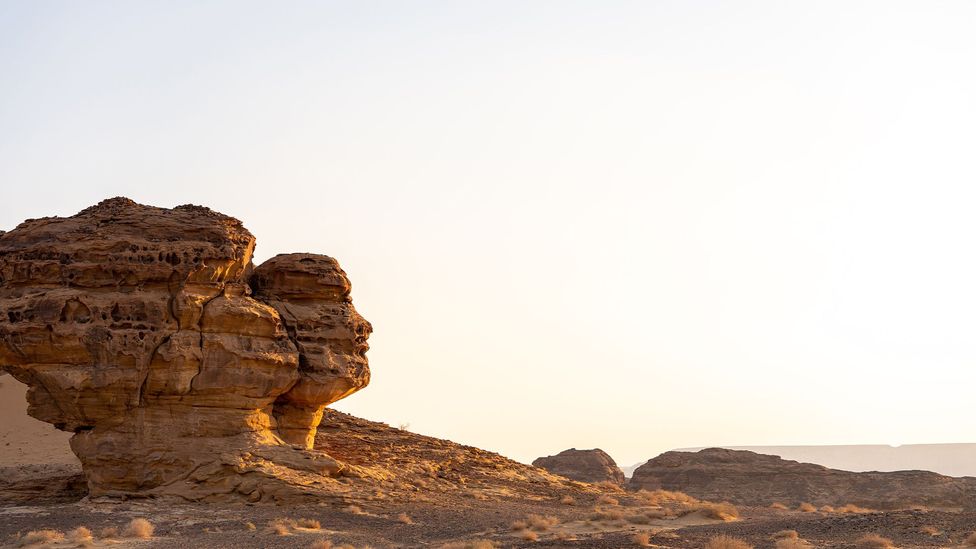
(Credit: Yulia Denisyuk)
AlUla's many secrets
In addition to Saudi Arabia being largely closed off to outsiders for centuries, parts of AlUla remained off-limits to all Muslims – including those in Saudi Arabia – until recent years because of a belief that it was "cursed" by the Prophet Muhammad and therefore "haunted". Yet in an attempt to shed light on the many civilisations that once thrived here, a team of researchers began conducting the first in-depth archaeological survey of the area in 2019. Since then, a string of remarkable discoveries has rewritten our understanding of human history in the Arabian Peninsula.
More than 1,600 Neolithic stone monuments called mustatils (rectangles in Arabic) have been uncovered in the AlUla region, revealing that people already thrived here some 7,000 years ago. In 2021, a team of archaeologists discovered evidence that people here were domesticating dogs as early as 4,000 BCE. And in 2023, the world's largest prehistoric axe, a 51cm tool from 200,000 years ago, was found just south of the AlUla oasis.
"The archaeological findings of the last few years are rewriting our understanding of this area," said Dr Rebecca Foote, Director of Archaeology and Cultural Heritage Research for the Royal Commission for AlUla. "We are getting a rich picture that the towns and cities of the AlUla Valley were dynamic, with people living in multiple places at any given time."
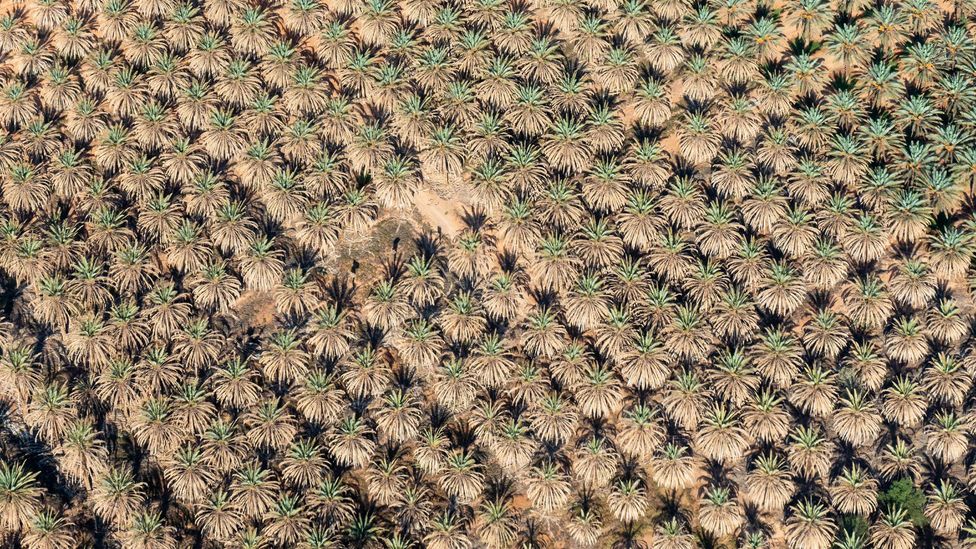
(Credit: Yulia Denisyuk)
Ingenious desert engineering
Ancient humans in AlUla used sophisticated engineering to prosper in this parched landscape. Beginning in the Dadan kingdom, area residents constructed massive cisterns and wells to both collect rainwater and access underground water aquifers. By the early Islamic period, a system of irrigation canals called qanats carried water from the foot of the mountains into the fields using gravity and precise calculations of slope. This skillful management of available water has helped AlUla become an agricultural hub, growing dates, citrus, figs and even wheat and barley.
Today, native date palms (pictured) continue to dominate the landscape, with 2.3 million trees producing more than 90,000 tonnes of dates each year.
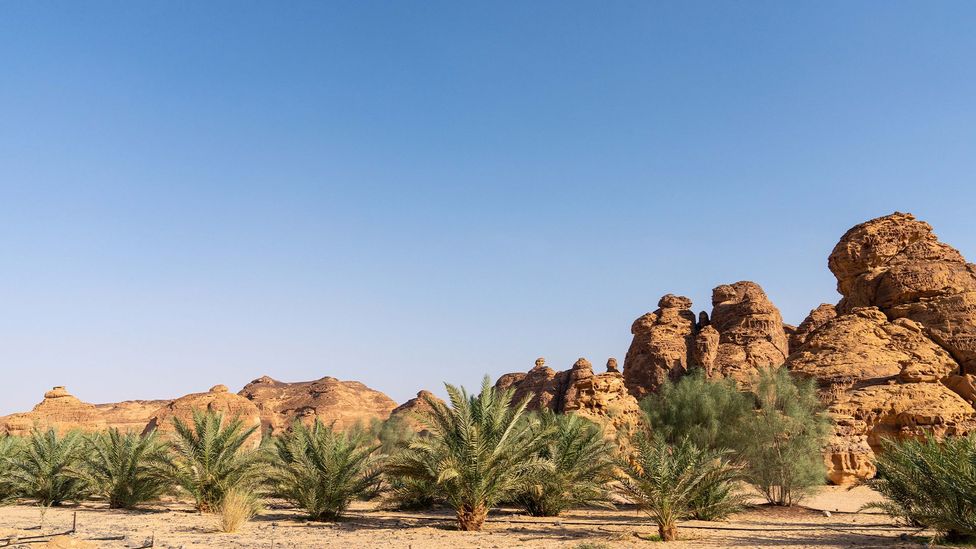
(Credit: Yulia Denisyuk)
A green oasis
AlUla's date industry provides the foundation for the rest of the area's agricultural production: in the shade of its millions of date palms, citrus trees produce oranges, lemons, grapefruit and kumquats. Beneath the trees, farmers grow herbs like mint and basil. The Moringa peregrina, a tree praised for its cosmetic and medical properties, is cultivated nearby.
Each January, the AlUla Citrus Festival brings together the region's farmers, shoppers and visitors during the harvest season, when more than 15,000 tonnes of citrus are collected and sold.
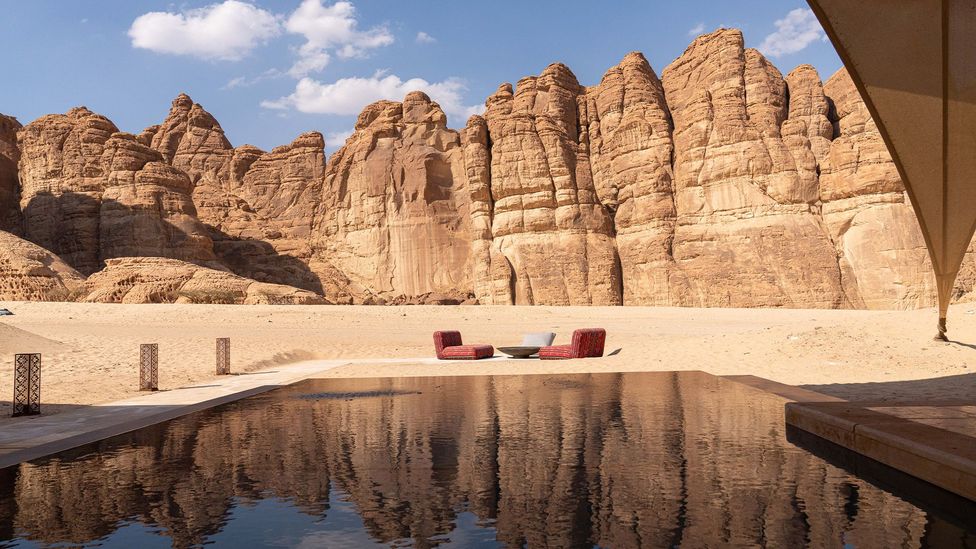
(Credit: Yulia Denisyuk)
Natural wonders
In addition to its remarkable human history, the AlUla Valley is also filled with dramatic natural wonders, like desert canyons, sandstone cliffs, wind-carved rock formations and volcanic landscapes. North-east of the AlUla oasis, the 1,500sq km Sharaan Nature Reserve is home to Nubian Ibex, gazelles, red-necked ostriches and the elusive Arabian wolf.
In the Ashar Valley (pictured here), giant ochre sandstone formations are the setting for AlUla's new hospitality scene, with several hotels, restaurants and even a concert hall hiding among the rocks.
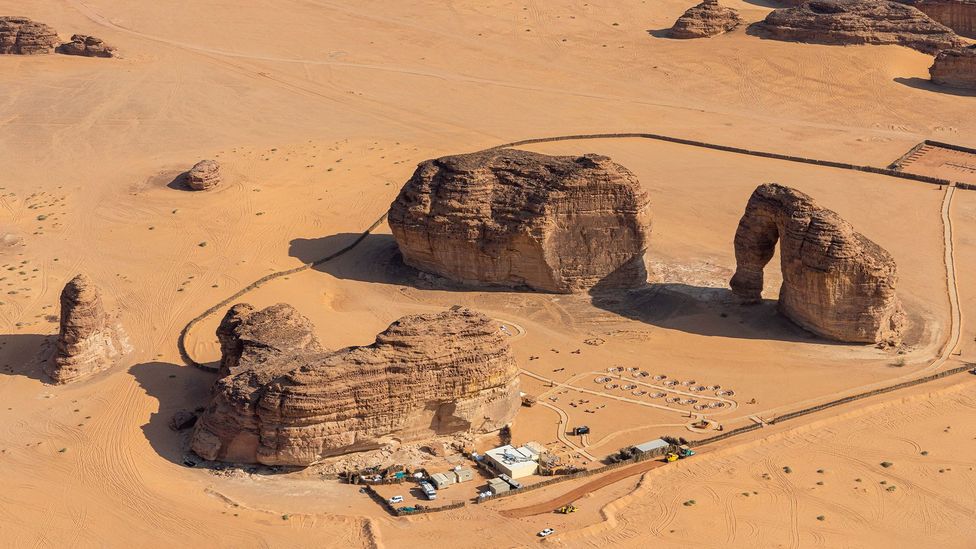
(Credit: Yulia Denisyuk)
Surreal shapes
Jabal AlFil, or Elephant Rock (pictured here), is one of AlUla's most prominent landmarks. This imposing sandstone mountain soaring 52m into the sky has been moulded into an elephant-like shape by wind and water erosion over millions of years. Seeing Jabal AlFil from above on a helicopter ride helped me appreciate just how vast – more than 22,000sq km – this valley is, and how much of a welcome sight this oasis must have been for weary travellers centuries ago.
Whimsically shaped natural creations are scattered elsewhere throughout AlUla, too: in Hegra, the Face Rock bids farewell to the setting sun while Sharaan Nature Reserve is home to the Dancing Rocks, two tower-like sandstone structures that seem to move in unison to an inaudible tune.
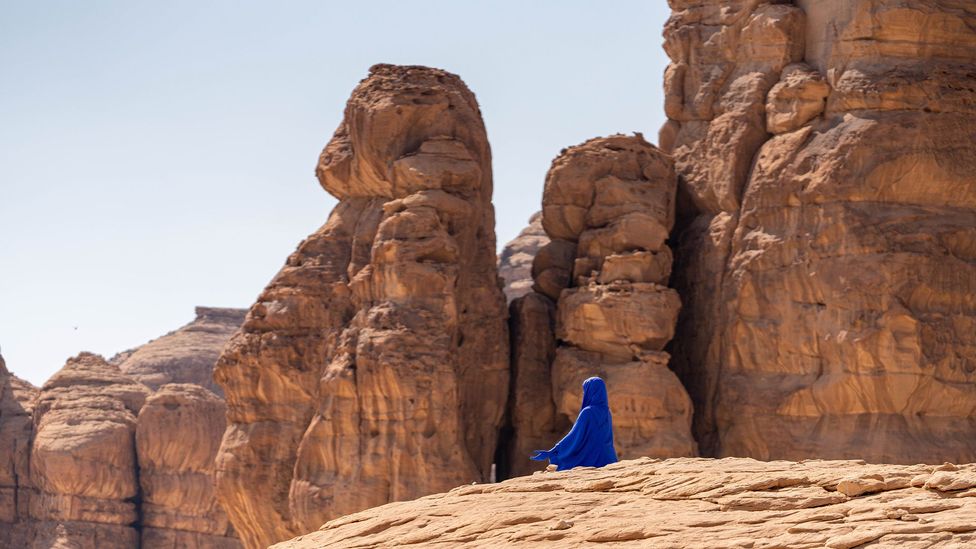
(Credit: Yulia Denisyuk)
Messages in the mountains
The freestanding rocks and cliffs in the AlUla region are home to more than 50,000 messages from the past, from Neolithic petroglyphs depicting hunting scenes to Nabataean tomb inscriptions warning visitors against entering and stealing property. These messages provide a glimpse into the extensive human history of not only AlUla, but also the greater region. "We have perhaps only found 10% of the history in this valley," said Atif Albalawi, one of the official rāwī, or storytelling guides, in AlUla. "On almost every cliff and mountain, you can find either ancient inscriptions or a drawing that was made thousands of years ago."
Alongside this prehistoric rock art, contemporary artists make their mark, too. Throughout AlUla, giant installations (like the one pictured) merge into the landscape, turning AlUla into a living museum of human expression through the ages.
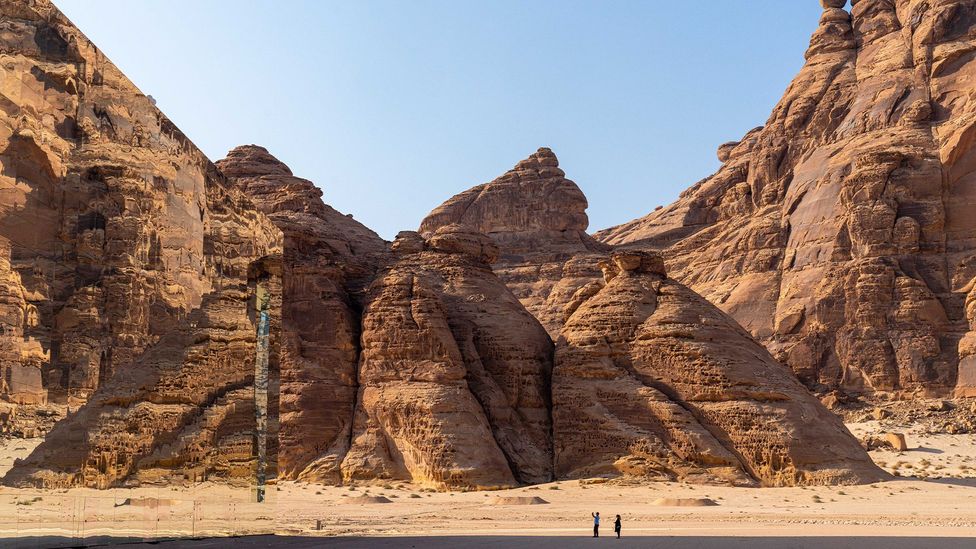
(Credit: Yulia Denisyuk)
Reflecting the past
In 2019, a contemporary mirage rose up from the desert in AlUla's Ashar Valley. This is Maraya, the world's largest mirrored building, covered with 9,740 glass panels that reflect the towering cliffs around it. Part art project, part gathering space for cultural events and concerts and part ultramodern conference centre, Maraya is the symbol for what AlUla always has been and aspires to remain: a destination at a crossroads attracting different people and ideas in the midst of an ancient land.
BBC Travel's In Pictures is a series that highlights stunning images from around the globe.
---
Join more than three million BBC Travel fans by liking us on Facebook, or follow us on Twitter and Instagram.
If you liked this story, sign up for The Essential List newsletter – a handpicked selection of features, videos and can't-miss news delivered to your inbox every Friday.
